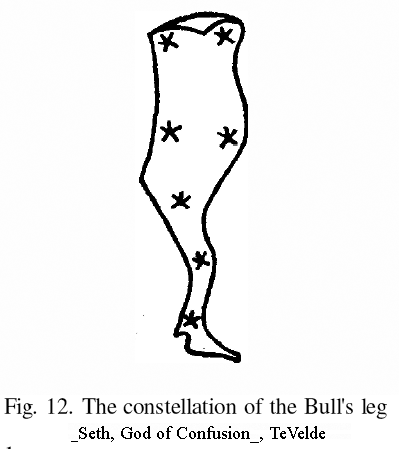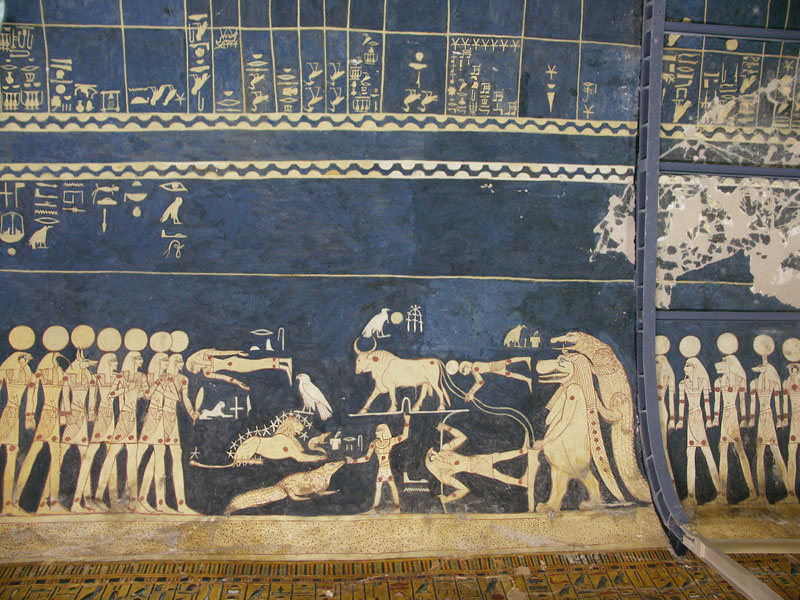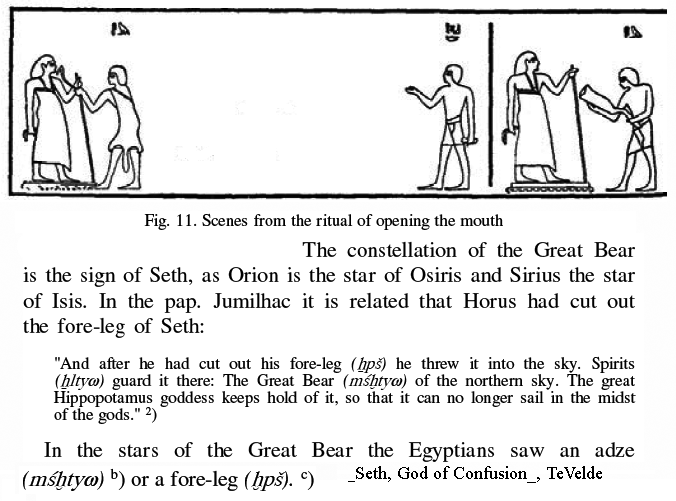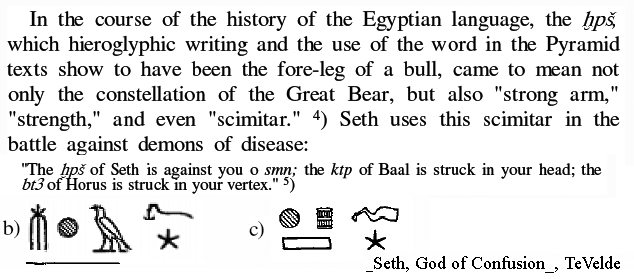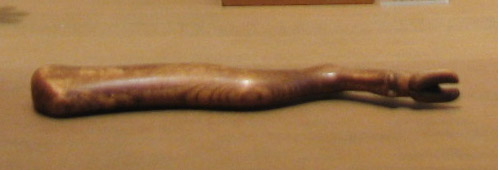
From left to right:
Heron, Set (with identifying hieroglyphs), jackal headed Duamutef, three falcon gods (likely varients of Horus, Ra-Horakhty, etc.),
the pharoah Seti I, uncertain god (but he has Thoth's ibis above him), and another jackal headed Duamutef, then likely Ra-Horakhty in the boat.
Detail of a relief at tomb of Seti I
(Enlarged and clarified from drawing of Lepsius)
(Tomb KV17 is the tomb of Pharaoh Seti I of the Nineteenth Dynasty)
We are so fortunate to have Lepsius' drawings, for some damage has occurred since the mid 19th century, when he made those drawings:
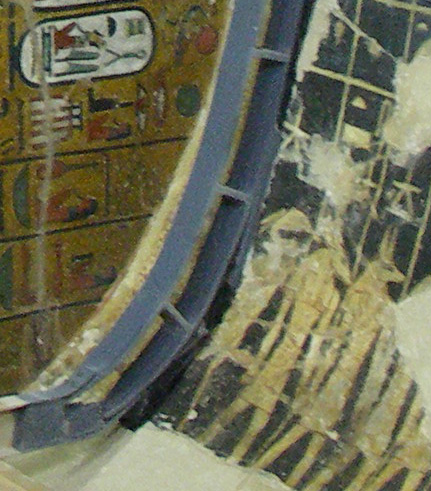
Photo courtesy William Petty
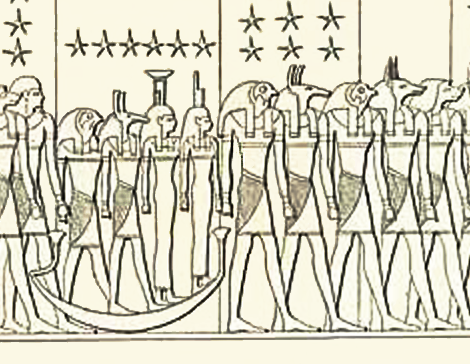
In the boat is Horus the Elder, Set, Nephthys, and Isis, another Set appears between two falcon gods, then Anubis...
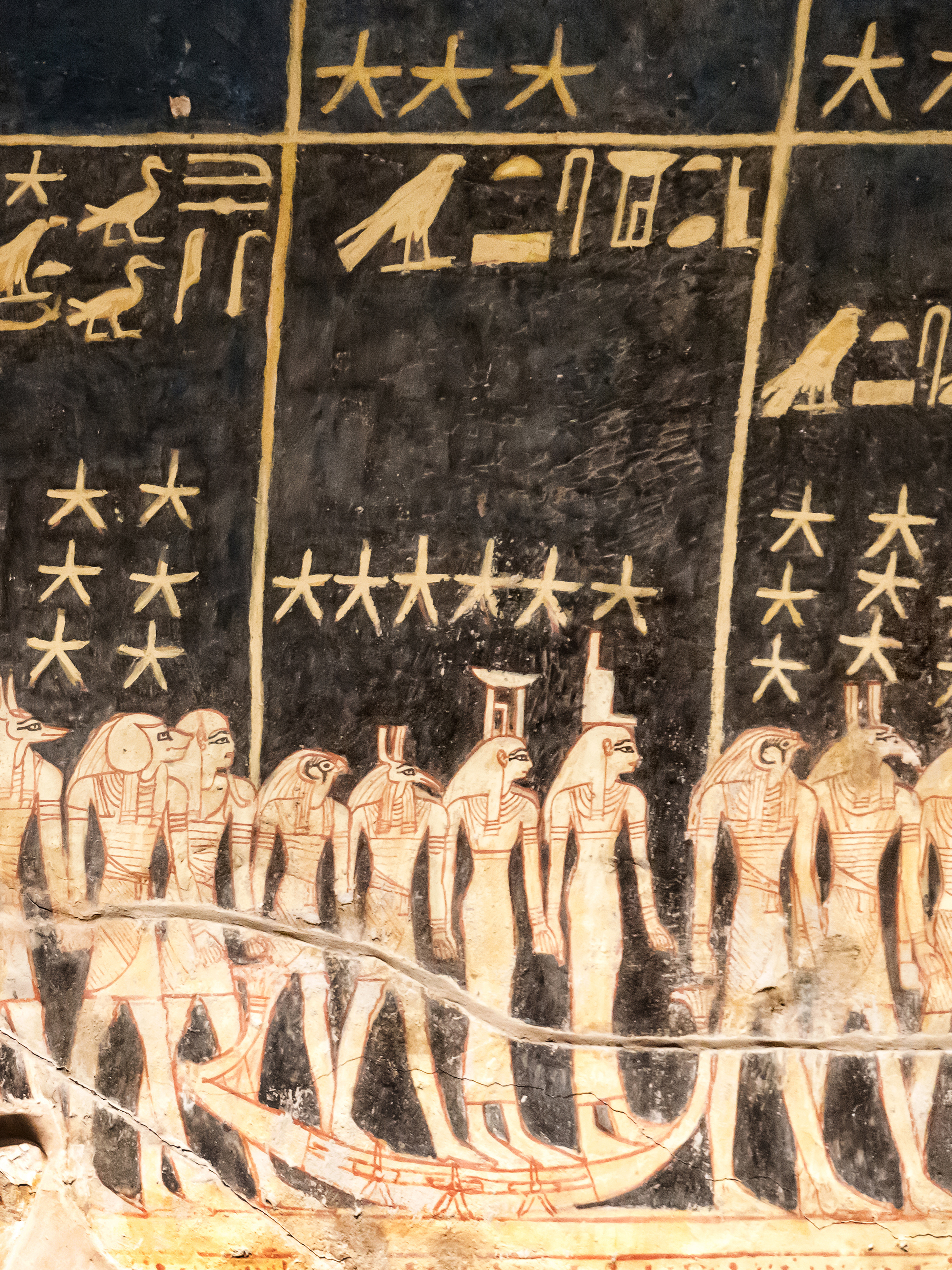
In this crop of a photo by "KairoInfo4u", we can see the four deities in the boat, with their naming hieroglyphs above.
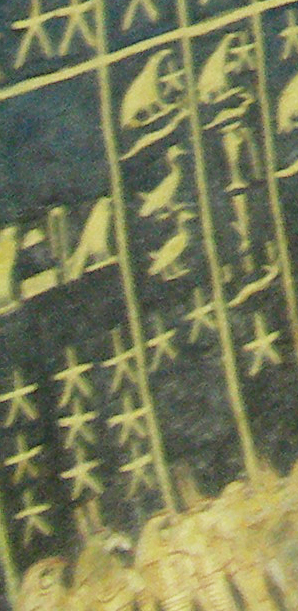
I spied him in the upper corner of this photo, and rotated him around, and yes, his name shows, also.
Photo courtesy William Petty
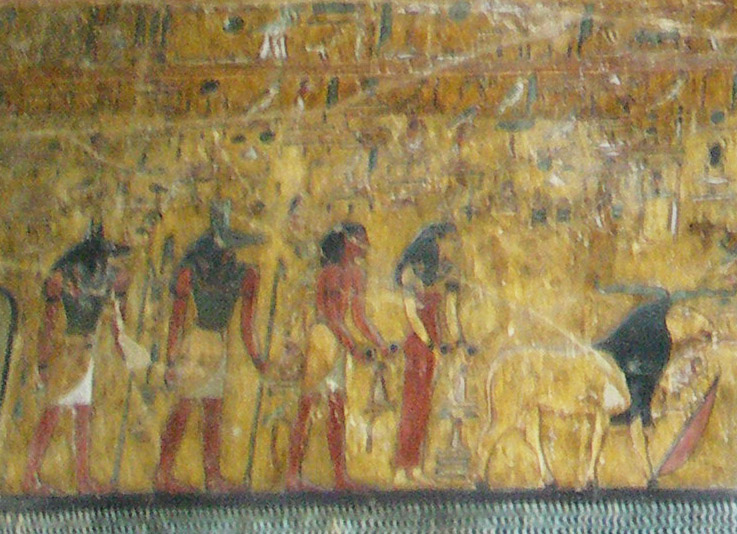
This is from the same photo from which the detail above this one has been cropped.
It is on the wall below the astronomical ceiling, and so far I haven't found a clarifying sketch by Lepsius.
There is, however a similar scene at Amenhotep III's tomb
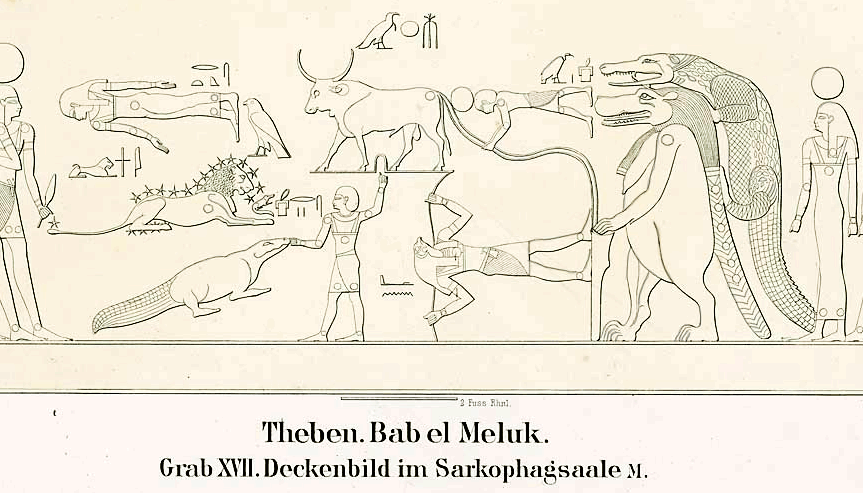
Drawing from Valley of the Kings, Grave 17, credit: Lepsius
(Tomb KV17 is the tomb of Pharaoh Seti I of the Nineteenth Dynasty.)
